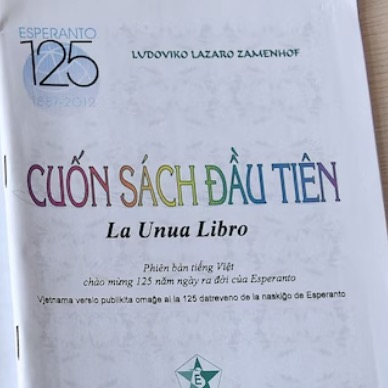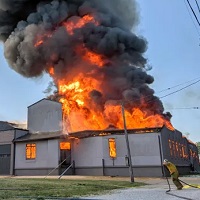AJ Four Ways:
Text Only (by date) | headlines only
- Good Morning
Today’s Highlights: History is being literalized and edited in real-time. The National Portrait Gallery has swapped its portraits of Donald Trump and removed caption text referencing his two impeachments, a move that has reignited debates over how federal institutions curate political legacy (Washington Post (Yahoo) ).
In the commercial sector, the promise of digital efficiency is faltering. A new investigation reveals that while digital ticketing was supposed to end counterfeiting, it has instead “blown the doors open” for a new generation of scammers and more sophisticated fraud (Fast Company ).
Finally, we recognize the passing of Hungarian director Béla Tarr, the cinephile’s icon whose seven-hour epics stood as an uncompromising defense of time and focus in an increasingly distracted world (The Guardian (UK) ).
All of the stories we collected are below.
- Golden Globes Live Updates
In case you want to know, the Los Angeles Times has you covered. (So does Variety.) – Los Angeles Times
- Why Is Ticketing Fraud So Widespread – And So Hard To Fix?
Digital tickets fixed physical ticket counterfeiting, sure. But “digital tickets didn’t eliminate fraud. They just changed the face of it—and in the process, blew the doors open for a new generation of scammers.” – Fast Company
- How A Writer Got Sucked Into The Ranks Of Broadway Superfans
“There was what I would not call lying to my family but obfuscating about where I was and what I was doing, as if I were having an affair. (An affair would have been easier to explain.)” – The New York Times
- Turns Out Movie Director Ben Wheatley Is Also Prolific Musician Dave Wheldon
The director of indies and Meg 2: The Trench says, “Before it might have been playing games or doomscrolling. [Making music] is a more productive and creative way of calming down.” – The Guardian (UK)
- National Portrait Gallery Swaps Trump Portraits And Removes Reference To His Two Impeachments
The caption for the previous photo read in part, “Impeached twice, on charges of abuse of power and incitement of insurrection after supporters attacked the U.S. Capitol on January 6, 2021, he was acquitted by the Senate in both trials.” – Washington Post (Yahoo)
- Bela Tarr, Hungarian Director Beloved By Cinephiles, Has Died At 70
“Susan Sontag once claimed she would be ‘glad to see’ Béla Tarr’s 1994 masterpiece Sátántangó ‘every year for the rest of my life.’ No small compliment given that the film is more than seven hours long.” – The Guardian (UK)
- Why Are So Many Writers Dropping Out Of Adelaide’s Famous Writing Festival?
“Nearly 50 authors, commentators, and academics have dropped out of this year’s Adelaide Festival in Australia after the Festival announced that they were canceling an appearance by Dr. Randa Abdel-Fattah over ‘cultural sensitivity’ concerns.” – LitHub
- ‘Don’t Forget My Old Soul’<a href="https://www.artsjournal.com/herman/2026/01/dont-forget-my-old-soul.html" title="‘Don’t Forget My Old Soul’” rel=”nofollow”>
 When I saw this eye-popping video for the first time, it bowled me over. I’ve rewatched it several times and am still marveling at it. But is this work a piece of AI-slop? Is it “kind of meaningless in [its] calculated reality,” as Doug McLennan has written of the genre?
When I saw this eye-popping video for the first time, it bowled me over. I’ve rewatched it several times and am still marveling at it. But is this work a piece of AI-slop? Is it “kind of meaningless in [its] calculated reality,” as Doug McLennan has written of the genre? - Actor And Director Timothy Busfield Accused Of Child Sex Abuse
A judge in New Mexico issued a warrant for his arrest. “Busfield was charged with two counts of criminal sexual contact of a minor and one count of child abuse after two child actors said he had touched them inappropriately over a period of years.” – The New York Times
- Adapting A ‘Controversial’ Bestselling Book To The Screen Isn’t Easy
Netflix’s adaptation of Emily Henry’s The People We Meet on Vacation has some issues. “This diminishment of each element almost entirely nukes the book’s grounded sense of Poppy’s motivations behind her noncommittal approach to life. And that’s, like, her whole thing! That’s not a conflict, but the conflict!” Oops. – Slate
- This Little-Known Museum Has Old Hollywood In Its Very Bones
“Everything we now know as ‘Hollywood,’ … the global ‘dream machine’ with all its enduring art, complicated mythology and current anxieties, began under a cedar-shingled roof where DeMille set up in a tiny corner office and actors changed costumes in horse stalls.” – Los Angeles Times (Yahoo)
- Oscar-Winning ‘Crash’ Filmmaker Paul Haggis Civil Case For Rape Settles For Two Million
Haggis, never convicted in a criminal court, was initially ordered to pay a former publicist $7.5 million. – The New York Times
- Why Thomas Paine Still Matters, 250 Years Later
“The pamphlet changed the way Americans viewed government. Beginning with an origin story that echoed John Locke’s ‘Second Treatise of Government,’ Paine depicted people originally created free and equal in nature and subsequently forming representative governments to better secure their liberty and happiness.” – Salon
- So X Is Suing Music Publishers, Again
It’s a new lawsuit in a long, long battle, with opponents that are not exactly beloved. “X and the publishers have been in a legal battle for years, with the NMPA first suing the platform back in 2023 over allegations of mass copyright infringement.” – The Hollywood Reporter
- This Oregon Library Is Literally Sinking
It’s probably the busiest building downtown. But the area’s residents have voted down two library bonds. What’s next? – Oregon ArtsWatch
- Wagner Moura’s Starring Year
“After his breakout role as Pablo Escobar 10 years ago on Netflix’s Narcos, Moura frustrated his agents by turning down many of the high-profile, lucrative projects that came his way.” Then? The Secret Agent came along. – The New York Times
- How An REM Song Helped A Doomsday Cult Member Escape
“As my will to blindly obey crumbled, I began to secretly tune in to the American armed forces radio station that broadcast in Japan. … One day, ‘Losing My Religion’ came on, and I remember hearing it for the first time and freezing. I physically stopped walking.” – The Guardian (UK)
- Orlando Fully Launched Tilda Swinton’s Career
And she pays the book, at least, back with a reread every few years. – The New York Times
- Who Will Win Tonight’s Golden Globes?
For one thing, “Warner Bros. will swear there was absolutely no calculation involved in running One Battle After Another as a Comedy at the Globes. If so, the field just happened to shake out awfully nice for the presumed Oscar front-runner.” – Vulture
- The Current Kennedy Center Heads Claim That They Broke Up With The Opera First
No doubt we should believe that leadership just as much as we’d believe any questionable partner. “Opera leaders had said that it was an amicable split, and made no mention of the political turmoil causing many artists to cancel their Kennedy Center engagements.” – Variety
- Good Morning
This week’s highlights: The big story of the week is the continued meltdown of the Kennedy Center. More artists pulled out of their appearances. And the bombshell is the decision of the Washington National Opera’s to leave its longtime home. (The New York Times). Then there is the dissolution of the Corporation for Public Broadcasting, which has left stations in cities like Atlanta facing a “cold dose of reality” and significant budget gaps (The Guardian). In the visual arts, artists are increasingly being asked to finance their own museum exhibitions, signaling a shift in the basic economic contract between creators and institutions (The Art Newspaper).
Technology continues to reshape the boundaries of creation and ownership. Disney’s $1 billion investment in OpenAI represents a major corporate embrace of generative AI (The Wall Street Journal (MSN)). The legal system prepares for a pivotal year of copyright rulings on AI (Reuters). A Japanese literary prize was revoked after the work was revealed to be AI-generated (Automation). Yet French researchers are using AI to “resurrect” Molière, blurring the lines between homage and automation (The New York Times).
Elsewhere, a university course on “Existential Despair” that requires silence and deep reading has become a surprise hit, reflecting a hunger for depth in a distracted age (New York Magazine). And in a surprising twist, the Metropolitan Opera is courting TikTok influencers to bring “delight and surprise” to a younger generation, proving that even the most traditional art forms are seeking new ways to resonate (The New York Times).
All of this week’s stories below.
- Marvin Curtis talks about the extraordinary documentary, The Invisible Player
Marvin Curtis, Immediate Past Board Chair of the South Bend Symphony shares the purpose and impact behind the documentary, The Invisible Player.
- Not an Arts Impact Statement, But Really GreatIn the midst of a lot of other news in his first 8 days in office….funding for child care for all, reactions to tragedy, responding to threats from the federal government, and more, new New York City Mayor Zohran Mamdani made ‘arts for all’ a priority. On Friday, he joined with the producers of the […]
- John Luther Adams on “Why I Moved from the US to Australia”

A couple of my recent blogs – here and here — have saluted John Luther Adams as “among the most esteemed present-day American composers for orchestra. . . . Encountering Adams’s Become Ocean on a 21st-century symphonic program is so fundamentally enthralling that it risks cliché. It is the proverbial oasis in the
- Washington National Opera To Leave The Kennedy Center
The resolution calls for the opera to move its performances out of the Kennedy Center’s 2,364-seat Opera House as soon as possible and to reduce the number of performances as a cost-saving measure. Opera officials said that new sites in Washington have been lined up but that no leases have been signed. – The New York Times
- How Does This Professor Get Students To Read Complete Books? With A Class Called “Existential Despair.”
The professor is Justin McDaniel, chair of the religious studies department at Penn. The class meets once a week for seven-to-eight hours, reading one book cover-to-cover in complete silence, then discuss it. No phones, of course. – New York Magazine
- Could Japan’s Highest-Grossing-Ever Live-Action Film Revive Interest In Kabuki?
In the movie Kokuho, a epic covering five decades in the life of a fictional kabuki actor, we see the traditional theater slowly fade from Japanese popular culture. In real life, interest in kabuki has fallen, especially since COVID. Now there’s hope that the film’s success could attract new fans to the genre. – CNN
- Philanthropist Ensures Live Orchestra For San Diego Opera
On Monday, San Diego Opera announced that Jacobs has committed $4.5 million to establish The Joan and Irwin Jacobs San Diego Symphony and San Diego Opera Collaboration Fund. – San Diego Union-Tribune (MSN)
- The Humanities Crisis Is Over. Uh-Oh.
There is no longer a crisis in the humanities. Our field’s long-running narrative of continuous crisis is over. The bad news: The crisis of the humanities has been revealed by the events of the last year to be a crisis of civil society writ large. – Chronicle of Higher Education
- The Poverty Of Living When Everything Is Ranked
Value capture occurs when you get your values from some external source and let them rule you without adapting them.” Because we live in a world in which nearly everything is quantified and ranked, value capture is everywhere. – The New Yorker
- First Designs Released For 2032 Olympic Stadium In Brisbane
The design, by the Australian firms Cox Architecture and Hassell in collaboration with the Japanese practice Azusa Sekkei, is inspired by the wraparound verandas of traditional “Queenslander” houses. (Brisbane is the Queensland state capital.) – CNN
- Making Climate Change Real: When We Write About Places People Know
We have discovered that writing about local places that people are already connected to changes this dynamic and gives people a way to examine their own assumptions within a recognisable framework. – The Conversation
- Science Fiction And The Art Of Predicting The Future
At odds with the outspoken desire for that which is novel and original in art, audiences also have a hunger for the familiar or at least the spectacularly plausible. If the future can’t be predicted, then maybe it can be gamed out, run through a series of thought experiments. – The Baffler
- Researchers Use AI To Decipher Tens Of Thousands Of Medieval Manuscripts
More than 32,000 manuscripts were transcribed in the space of a few months. – Inria





